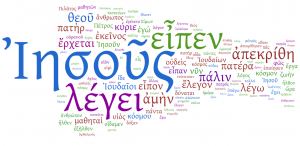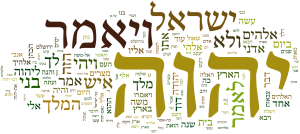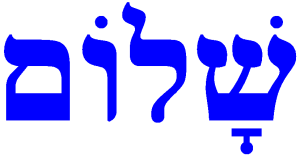

What the Text Actually Says
You don’t need to know Greek or Hebrew to read the bible. Most modern translations are reliable today, and many editions have footnotes to help readers navigate the more difficult passages. Still, much gets lost in translation, so it’s good for us to return to these ancient languages to know what the original authors were trying to convey.
Generally speaking, the Old Testament was written in Hebrew, and the New Testament in Greek. Some books of the Old Testament were also written in Greek, and a few sections of Daniel and Ezra were composed in Aramaic. Biblical scholars study all of these languages (as well as Latin, Coptic, Syriac, and others), and the modern translations we read today benefit greatly from their hard work.
When the biblical authors first began writing down their sacred traditions, they wrote their books in Hebrew, which remained the native language of the Israelites up through the time of Jesus and beyond. Eventually the Israelites were conquered by foreigners from Mesopotamia (modern-day Iraq) in the 8th and 6th centuries BC, and these conquerors made Aramaic the official language of their empire. Aramaic soon became the common language of the Jewish people and was still spoken at the time of Jesus. A few centuries later (around 300 BC), Alexander the Great conquered much of the ancient Near East and established Greek as the official language of his empire. Even though Jews continued to speak Aramaic and Hebrew on a regular basis, they decided to translate their sacred scriptures (at that time the Old Testament) into Greek and to compose new sacred texts (the New Testament) in Greek.
 Most words in ancient languages translate smoothly into English, but not all. As is true of foreign languages today, words often have multiple meanings, and sometimes they encompass multiple meanings all at once. Take the word shalom, for example. The most common rendering for this word is “peace,” but the word actually means much more than that. In Hebrew, shalom can also refer to completeness, wholeness, or perfection. Shalom is also used as a greeting in Hebrew, and when you wish someone shalom, you’re actually wishing them overall well-being and prosperity. It’s like telling them that you want everything in their life to be wonderful.
Most words in ancient languages translate smoothly into English, but not all. As is true of foreign languages today, words often have multiple meanings, and sometimes they encompass multiple meanings all at once. Take the word shalom, for example. The most common rendering for this word is “peace,” but the word actually means much more than that. In Hebrew, shalom can also refer to completeness, wholeness, or perfection. Shalom is also used as a greeting in Hebrew, and when you wish someone shalom, you’re actually wishing them overall well-being and prosperity. It’s like telling them that you want everything in their life to be wonderful.
![]() Another example is the Greek word logos. Its primary meaning is “word,” but it can also mean several dozen other things. Here’s a sample: “computation, account, reckoning, measure, story, value, relation, correspondence, proportion, explanation, reason, case, argument, principle, law, hypothesis, debate, thinking, thought, speech, expression, report, discussion, proverb, saying, maxim, divine oracle.” And there’s more!
Another example is the Greek word logos. Its primary meaning is “word,” but it can also mean several dozen other things. Here’s a sample: “computation, account, reckoning, measure, story, value, relation, correspondence, proportion, explanation, reason, case, argument, principle, law, hypothesis, debate, thinking, thought, speech, expression, report, discussion, proverb, saying, maxim, divine oracle.” And there’s more!
As usual, the context will usually help you figure out if the author is talking about a story, or a thought that someone had, or something they expressed verbally, but sometimes the meaning of logos is harder to pin down. A classic example is the opening chapter of the Gospel of John: “In the beginning was the Word (logos), and the Word (logos) was with God…” The standard rendering for logos is “word,” but the evangelist is probably envisioning so much more than a mere word. He’s linking Jesus to the wisdom tradition of the Old Testament where Jesus is wisdom itself (thus “thought,” “reckoning,” “maxim,” etc.) and to the prophetic tradition where God’s Word was spoken to the Israelites through the prophets (thus “word,” “saying,” “report,” “divine oracle”). And there are still more possibilities than these. Knowing this wide range of meaning for logos helps readers interpret this theologically profound passage more fully.
Now see this method applied to the Parable of the Prodigal Son.
